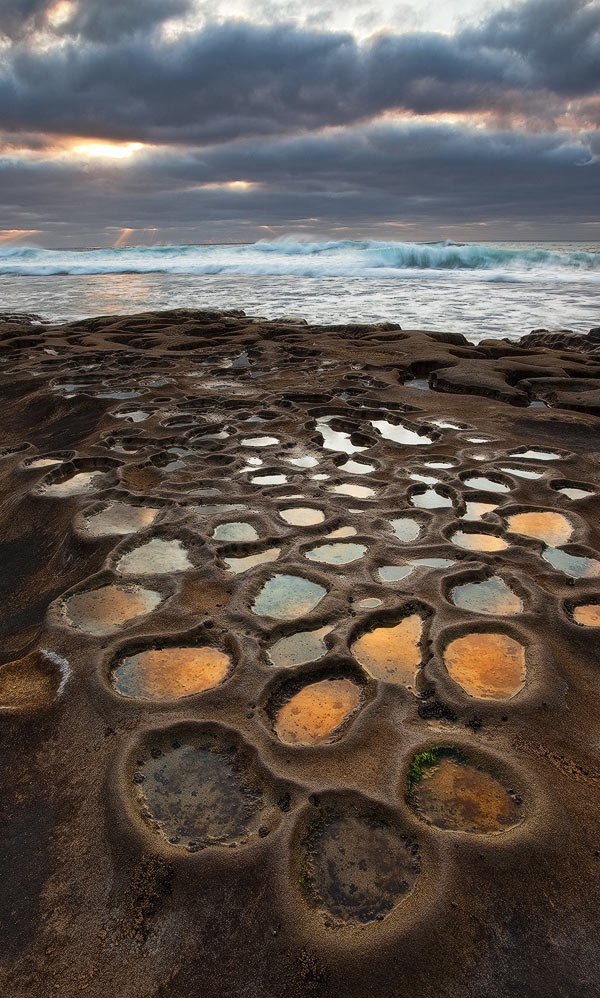Coastal Potholes

Geology is a branch of science, which includes the study of the Earth, rocks, etc. It gives an insight to the history of the Earth as it provides evidence of plate tectonics, features of the Earth in the past, past climatic conditions, etc.
Any of the various coastal features, present along any coast, as a result of a combination of processes, sediments and the geology of the coast itself, are known as coastal land-forms. The coastal environment is made up of a wide variety of land-forms established in a variety of sizes and shapes, ranging from the slope of the beach, the small potholes formed along the shores, to the high cliffs. Yet, coastal land-forms are characterized into two broad categories: depositional formations and erosional formations. The formation of coastal potholes is an example of erosional formation.
The formation of coastal potholes is a geological phenomenon. They circular depressions found on wave cut platforms. They are formed in the rocky channel of a turbulent stream. They are further enlarged by the constant the motion of waves and the abrading action of pebbles. Groundwater also plays a significant role in the creation and sustenance of these potholes. Other natural occurrences, such as climate, temperature, wind, and (though somewhat indirectly) gravity also plays a major role in coastal processes.

Geology is a branch of science, which includes the study of the Earth, rocks, etc. It gives an insight to the history of the Earth as it provides evidence of plate tectonics, features of the Earth in the past, past climatic conditions, etc.
Any of the various coastal features, present along any coast, as a result of a combination of processes, sediments and the geology of the coast itself, are known as coastal land-forms. The coastal environment is made up of a wide variety of land-forms established in a variety of sizes and shapes, ranging from the slope of the beach, the small potholes formed along the shores, to the high cliffs. Yet, coastal land-forms are characterized into two broad categories: depositional formations and erosional formations. The formation of coastal potholes is an example of erosional formation.
The formation of coastal potholes is a geological phenomenon. They circular depressions found on wave cut platforms. They are formed in the rocky channel of a turbulent stream. They are further enlarged by the constant the motion of waves and the abrading action of pebbles. Groundwater also plays a significant role in the creation and sustenance of these potholes. Other natural occurrences, such as climate, temperature, wind, and (though somewhat indirectly) gravity also plays a major role in coastal processes.


No comments:
Post a Comment